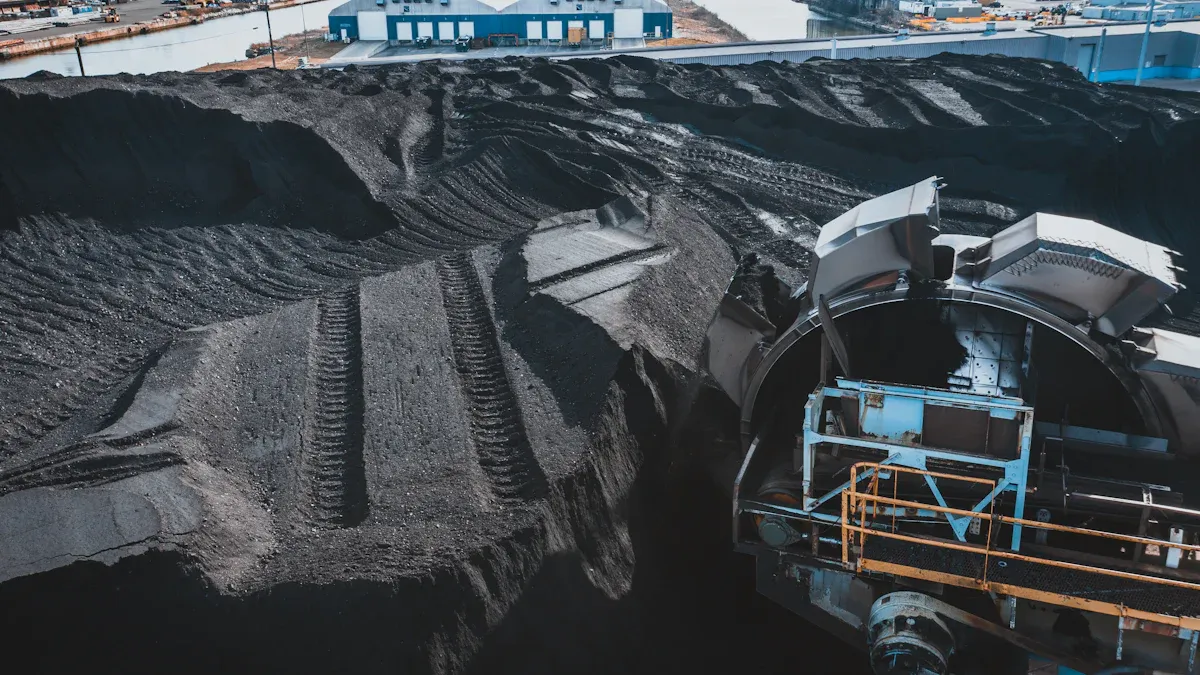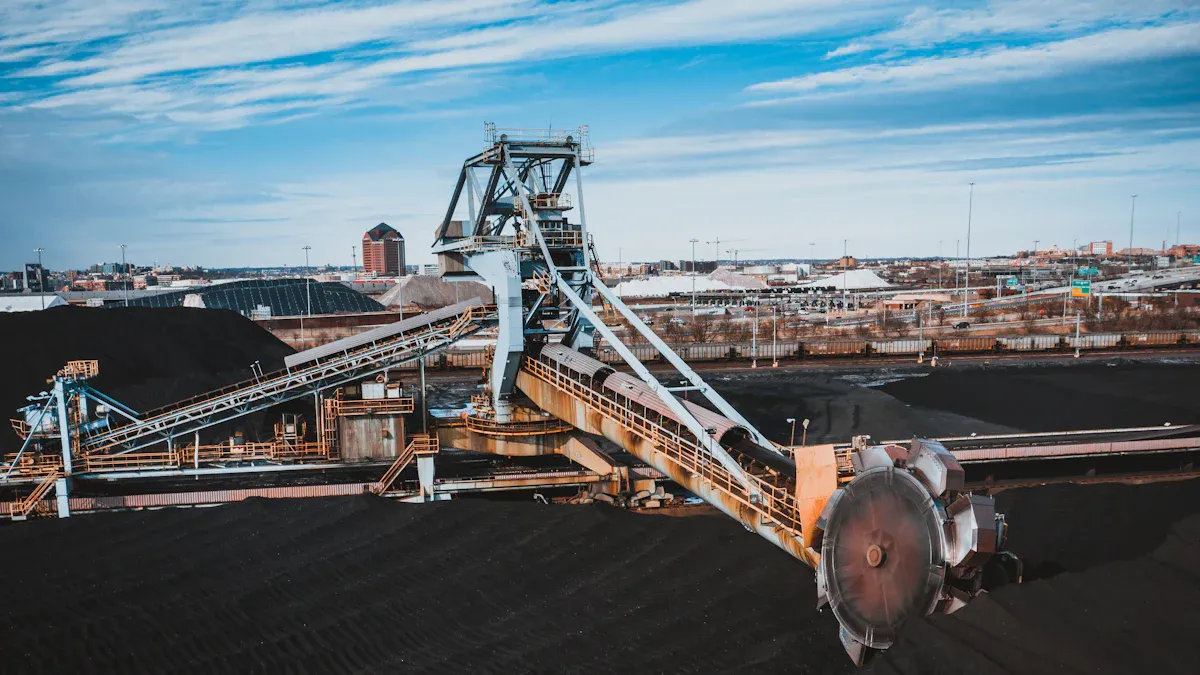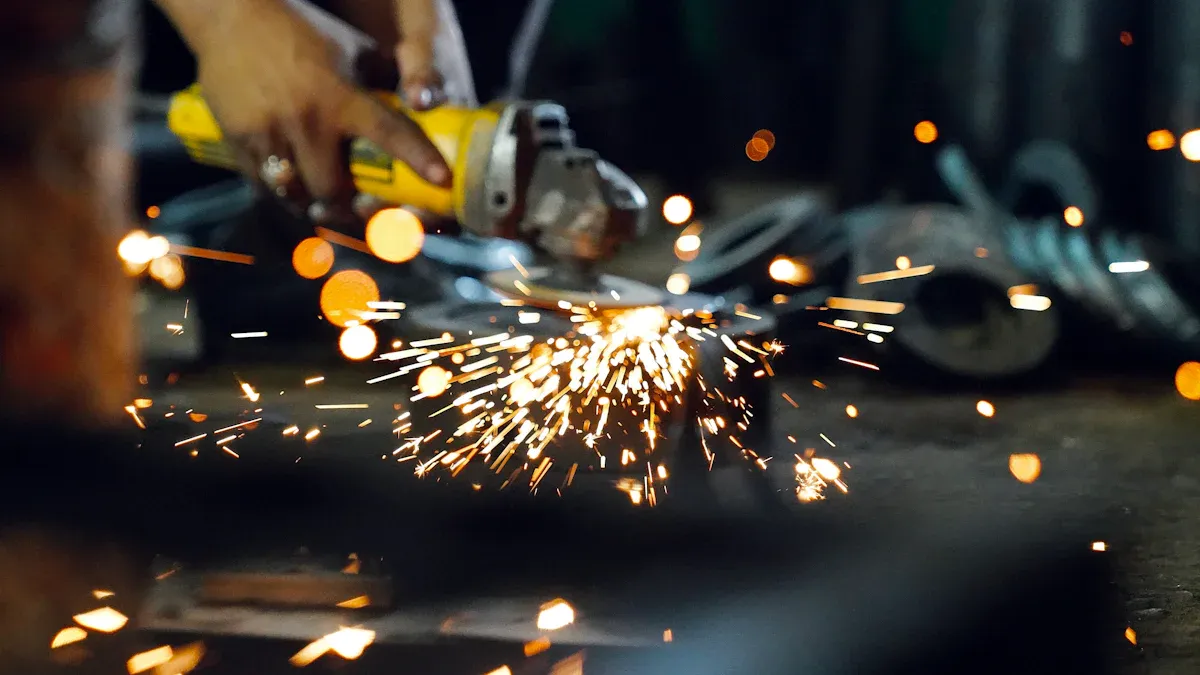
You may not realize it, but grinding balls play a crucial role in the efficiency of coal mills. These small yet powerful components ensure coal particles are ground to the desired size for optimal combustion. Their performance directly affects energy consumption and grinding outcomes. For instance, grinding coarser coal particles (−500 + 75 μm) consumes about 1025 kWh/t, while finer particles (−75 μm) demand nearly 1500 kWh/t. This sharp rise in energy usage highlights the importance of selecting the right grinding balls to balance efficiency and energy use. By improving grinding performance, you can also enhance the operational output of your coal mill.
 <
/p>
<
/p>
Grinding balls are essential components in a ball mill. These spherical objects help crush and grind coal into fine particles. This process ensures that coal burns efficiently in power plants or industrial furnaces. Without grinding balls, the ball mill cannot achieve the desired particle size, which directly impacts combustion quality. You rely on these balls to main tain consistent grinding performance and improve energy efficiency.
You can find different types of grinding balls based on material and design. Steel grinding balls are the most common. They are durable and suitable for heavy-duty grinding in coal mills. Cast iron balls are another option. They are cost-effective but wear out faster. Ceramic grinding balls are ideal for specific applications where contamination must be avoided. Each type has unique properties, so you should choose the one that matches your ball mill's requirements.
The performance of grinding balls depends on several key features. Size and weight play a significant role. Larger b alls are better for breaking down coarse coal, while smaller ones handle finer grinding. Material composition also matters. High-quality materials resist wear and last longer, reducing replacement costs. Surface hardness is another critical feature. Harder balls maintain their shape and grinding efficiency over time. By understanding these features, you can select grinding balls that optimize your ball mill's performance.
Grinding balls play a vital role in improving the performance of a ball mill. When you use the right grinding balls, they ensure coal particles are broken down to the desired size. This process enhances the combustion efficiency of coal in power plants and industrial furnaces. The size and material of the grinding balls directly influence how effectively the coal is ground. Larger balls are better for crushing coarse coal, while smaller ones are ideal for finer grinding. By optimizing the size and distribution of these balls, you can achieve a more uniform grind, which leads to better combustion and reduced waste.
The design of grinding balls also impacts their performance. High-quality materials, such as steel or ceramic, resist wear and maintain their shape over time. This durability ensures consistent grinding performance, even under heavy loads. When you select grinding balls with the right features, you can maximize the efficiency of your coal mill and reduce operational challenges.
Energy efficiency is a critical factor in coal mill operations. Grinding coal into fine particles requires significant energy, but the right grinding balls can help you reduce this consumption. Studies have shown that using a composite load, such as adding 25% pebbles to the grinding process, can lead to energy savings of up to 18%. This approach maintains the grinding capacity while lowering overall energy usage. Pebble consumption in this method accounts for only 7% of total production, making it a cost-effective solution.
By optimizing the material composition and size of grinding balls, you can further reduce e nergy consumption. Harder and more durable balls require less frequent replacement, which minimizes downtime and energy waste. Additionally, maintaining the correct ball-to-coal ratio in the ball mill ensures efficient grinding, reducing the energy required to achieve the desired particle size.
Effective integration of grinding balls in a coal mill can significantly boost operational output. When grinding balls are optimized for size, material, and distribution, they ensure consistent grinding performance. This consistency translates to a steady supply of finely ground coal, which improves the over all efficiency of the combustion process.
Statistical analyses have demonstrated the impact of grinding ball optimization on operational perfo rmance. For example, a two-way ANOVA test revealed that factors such as drum speed, clearance, and feeding area significantly affect throughput. Optimal conditions, including a drum speed of 150 rpm, a 2 mm clearance, and a 45 cm² feeding area, resulted in improved output. These findings were validated by advanced models, achieving high accuracy with a regression coefficient of 0.999995. By focusing on these factors, you can enhance the performance of your pulverizer coal mill and achieve better results.
In addition to improving throughput, optimized grinding balls reduce wear and tear on the ball mill. This reduction minimizes maintenance requirements and extends the lifespan of the equipment. When you invest in high-quality grinding balls and implement effective maintenance stra tegies, you can maximize the efficiency and reliability of your coal mills.
The material composition of grinding balls plays a critical role in their performance. High-quality materials improve hardness, wear resistance, and impact toughness. These properties ensure that grinding balls can withstand the rigorous demands of pulverizers and coal mills. For instance, forged grinding balls often outperform cast ones due to their superior hardness and durability. The forging process compacts the material and applies heat treatment, which enhances toughness and reduces breakage rates. This makes forged balls ideal for grinding coal in high-impact environments.
Tip: When selecting grinding balls, prioritize materials with high carbon content. This enhances the surface layer's strength, improving wear resistance and extending the lifespan of your coal ball mill.
Using the right material composition not only improves grinding efficiency but also reduces operational costs. Durable grinding balls require less frequent replacement, minimizing downtime and maintenance expenses. By investing in high-quality materials, you can optimize the performance of your pulverizer coal mill and achieve better results.
The size and weight of grinding balls significantly influence their effectiveness in coal mills. Larger balls are better suited for breaking down coarse coal particles, while smaller ones excel at fine grinding. The right combination of sizes ensures efficient size reduction and a uniform particle size distribution. Studies show that increasing the ball-to-material ratio leads to smaller particle sizes and narrower distributions, which are essential for efficient combustion in vertical coal mills.
| Parameter | Effect on Particle Size Distribution |
|---|---|
| Milling Speed | Increasing speed to 200rpm reduces particle size range, but little change at 368rpm. |
| Ball-to-Material Ratio | High er ratios lead to smaller particle sizes and narrower distribution. |
| Milling Time | Influences particle size but less than speed and ratio . |
You should also consider the weight of the grinding balls. Heavier balls deliver more impact energy, which is crucial for breaking down hard coal particles. However, excessive weight can increase wear on th e mill's components. Balancing size and weight is key to achieving optimal grinding performance and extending the lifespan of your coal mill.
Wear resistance and durability are essential for long-term grinding efficiency. Grinding balls in coal mills face constant impact, abrasion, and corrosion. These wear mechanisms can lead to mass loss and reduced performance over time. High manganese cast steel, for example, exhibits excellent wear resistance due to its ability to strain harden under stress. This property makes it ideal for use in pulverizers and vertical coal mills.
In a study on wear mechanisms, researchers found that erosion was the primary cause of wear in mill beaters. The material's carbon content played a significant role in enhancing the surface layer's strength, improving its resistance to wear. Durable grinding balls not only maintain their shape and performance but also reduce the frequency of replacements. This minimizes downtime and ensures consistent grindin g coal operations.
Note: Regularly inspect your gri nding balls for signs of wear. Implementing a maintenance schedule can help you identify and replace worn-out balls before they impact performance.
By choosing grinding balls with high wear resistance and durability, you can improve the efficiency of your coal mills and reduce operational costs. These factors directly contribute to better size reduction, energy savings, and overall mill performance.

Selecting the right material for grinding balls is critical for improving the performance of coal mills. Materials with high hardness and wear resistance, such as forged steel, ensure durability and consistent grinding. Research shows that the breakage rate of weaker materials increases when mixed with stronger ones. This highlights the importance of using high-strength grinding balls to enhance efficiency. Additionally, stronger materials maintain their breakage distribution values, whether ground alone or in mixtures. This consistency ensures reliable performance in pulverizers, reducing energy consumption and operational costs.
The choice of material also impacts the production of fines. Weaker materials produce more fines when ground with stronger ones, emphasizing the need for careful material selection. By choosing grinding balls with optimal material properties, you can achieve better grinding outcomes and extend the lifespan of your pulverizer coal mill.
The size and distribution of grinding balls significantly influence the efficiency of coal mills. Using a mix of ball sizes creates more contact points, improving the grinding rate. Studies reveal that varying ball sizes and mill filling levels can optimize efficiency. For instance, a low material-to-ball ratio often leads to inefficiencies. Adjusting this ratio ensures better energy utilization and reduces waste.
Industrial case studies demonstrate that combining different grinding media shapes enhances milling kinetics. This approach improves the uniformity of particle size distribution, which is essential for efficient combustion. By fine-tuning the size and distribution of grinding balls, you can maximize the performance of your pulverizer and achieve consistent grinding coal operations.
Regular maintenance and timely replacement of grinding balls are essential for sustaining the efficiency of coal mills. Eff ective maintenance schedules reduce downtime and prevent unexpected failures. For example, improved maintenance strategies at Plant Scherer enhanced operational efficiency and minimized delays. Replacing vibratory feeders with gravimetric feeders reduced the number of required parts and lowered inventory costs.
These changes also decreased contractor expenses and train unloading delays, showcasing the economic benefits of proactive maintenance. Regular inspections help identify worn-out grinding balls, ensuring consistent performance. By implementing these strategies, you can optimize the grinding process, reduce costs, and extend the lifespan of your pulverizer.
Grinding balls are essential for improving the efficiency of your coal mill. They ensure coal particles are ground to the right size for better combustion and energy savings. Selecting durable materials and optimizing ball size can enhance grinding performance and reduce operational costs. Regular maintenance keeps grinding balls in top condition, preventing wear and ensuring consistent output. By focusing on these strategies, you can maximize coal mill efficiency and achieve better results in your operations.
High-quality grinding balls improve coal mill efficiency by ensuring consistent particle size. They reduce wear, lower energy consumption, and minimize maintenance costs. Durable materials also extend the lifespan of your mill, saving you money in the long run.
You should inspect grinding balls regularly for wear. Replacement frequency depends on usage, material quality, and operating conditions. On average, replacing them every 6 to 12 months ensures optimal performance and prevents unexpected downtime.
Yes! Using a mix of ball sizes creates more contact points, enhancing grinding performance. Larger balls break coarse coal, while smaller ones handle finer grinding. Adjusting size and distribution ensures uniform particle size and be tter combustion.
Forged steel and high manganese cast steel are excellent choices. These materials offer superior hardness, wear resistance, and durability. They withstand heavy impacts and maintain performance over time, making them ideal for coal mills.
Wear-resistant grinding balls last longer and maintain their shape. This consistency ensures efficient grinding and reduces replacement frequency. Choosing durable materials minimizes downtime and operational costs, improving overall mill efficiency.
Tip: Regularly inspect grinding balls for wear to maintain consistent performa nce and avoid unexpected failures.